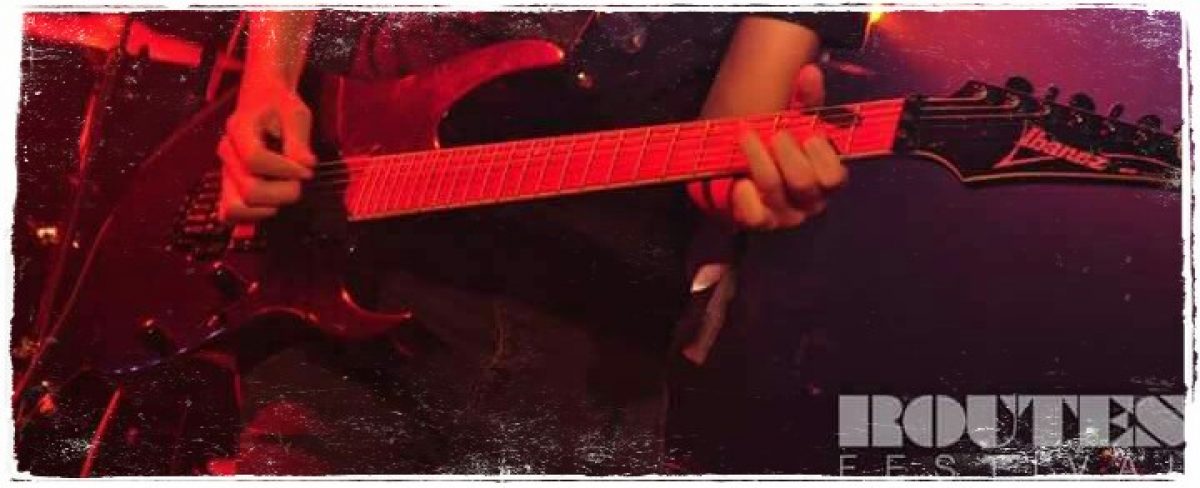For my project I looked into how to achieve a heavy metal sound, and write in complex time signatures as this is something I am really keen on working on when writing songs for my EP.
I would be using VST plug-ins for Ableton Live in order to record the guitars, therefore I would need to find some guitar and bass amplifier plug-ins that would help me in producing a heavy metal sound.
I found a website called Ignite Amps, who specialise in plug-ins for metal production. They have excellent VST plug-ins for amp sims, cabinets, overdrive and distortion pedals, and bass plugins as well. Conveniently, they have made all of their plug-ins free to download and use, with the option to donate if you feel inclined to.
I downloaded a few of their plug-ins, including the Emissary Amp, SHB-1 Bass amp, NadIR impulse response, and the TS-999 SubScreamer pedal. Installing these was fairly straight forward as they all came with their own installer.
I found many videos on YouTube praising the Emissary amp and related products, and this is one example that I found very useful when learning how to set them up and achieve a heavy metal guitar sound:
Once I had an idea of how to set up my guitars for a classic heavy metal sound I did some research into irregular time signatures.
Before I could start thinking about writing in unorthodox time signatures, I would first need to understand how they work, and how to play in them effectively.
“One of the simplest ways to make an audience feel at home in an irregular time signature is to really emphasize beat one” (Lee, 2016)
Emphasising the first note helps to define the start of the bar, and establish an apparent loop in a repeating riff which in turn makes complex time signatures easier to listen to. This video shows this concept of emphasising the first note to great effect:
Something also mentioned here is the way you should count the beats in irregular timing. A better method than just simply counting from 1 to 5 or 7 or whatever the bar may be written in, is to split the bar up into sections, so it’s more like you are counting the riff rather than the bar. This helps the performer to stay in time without having to concentrate on counting the entire bar.
Another topic I wanted to look into is drum replacement. Our kit at college isn’t the best to record with at the moment due to the room and lack of a hole in the kick drum, so I will likely need to replace some of the sounds when it comes to editing the live recording.
Drum replacement, also known as triggering, has had a common place in rock and metal music for years now as this genre relies heavily on the drums sounding consistent and heavy. Triggering the drums allows for a high quality drum sample to be played rather than the raw drum itself, meaning each track can have the same powerful sound. This also allows for edits to be made on recordings in order to patch up slight mistakes.
“Triggering is crucially important in rock and metal production, for instance, where the feel of a track will often rely on a sense of consistency between one strike and the next. Sixteenths played by a real drummer on the bass drum at 240bpm will inevitably suffer from a dulled attack, but with total sample replacement each bass drum strike can be as solid as the last.” (Dunkley and Houghton, 2021)
This will be a useful feature for my tracks as I will be trying to capture that consistently heavy sound of a rock drum kit.
I have also done some research into the pay rates from streaming platforms, and how this will affect the release of my EP. I have included this under my release page:
References:
Lee, M., 2016. 4 Tips to Help You Start Writing in Irregular Time Signatures – Soundfly. [online] Soundfly. Available at: <https://flypaper.soundfly.com/write/writing-irregular-time-signatures/>
Aichele, M., 2018. Understanding Time Signatures and Meters: A Musical Guide. [online] Liberty Park Music. Available at: <https://www.libertyparkmusic.com/musical-time-signatures/>
Messitte, N., 2014. Drum Replacement: The Dirty Little Secret That Changed Rock. [online] Forbes. Available at: <https://www.forbes.com/sites/nickmessitte/2014/04/30/drum-replacement-the-dirty-little-secret-that-changed-rock/?sh=6dde0fef30a3>
Dunkley, J. and Houghton, M., 2021. Replacing & Reinforcing Recorded Drums. [online] Soundonsound.com. Available at: <https://www.soundonsound.com/techniques/replacing-reinforcing-recorded-drums>
Sanchez, D., 2018. What Streaming Music Services Pay (Updated for 2020). [online] Digital Music News. Available at: <https://www.digitalmusicnews.com/2018/12/25/streaming-music-services-pay-2019/>
